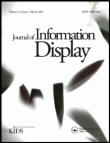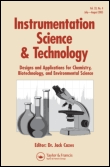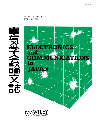
ITE Transactions on Media Technology and Applications
Scope & Guideline
Shaping the Future of Media Applications
Introduction
Aims and Scopes
- Imaging Technologies:
Focuses on the development and enhancement of imaging technologies including CMOS sensors, light-field displays, and various imaging techniques for applications in both consumer and professional contexts. - Display Technologies:
Explores advancements in display systems, particularly in areas like OLED and LCD technologies, including their performance, efficiency, and novel applications such as autostereoscopic displays. - Data Processing and Compression:
Investigates methods for efficient data processing, transmission, and compression, particularly in multimedia applications, ensuring high quality of experience (QoE) during media consumption. - 3D and Augmented Reality Applications:
Examines the integration of 3D technologies and augmented reality into various applications, enhancing user interaction and experience in both educational and entertainment sectors. - Machine Learning in Media Technology:
Utilizes machine learning techniques to improve various aspects of media technology, including image recognition, object detection, and content personalization.
Trending and Emerging
- Deep Learning Applications:
The integration of deep learning techniques in media technology is gaining prominence, particularly in areas like image classification, object detection, and enhancing image quality, reflecting the broader trend in technology towards artificial intelligence. - Enhanced Depth Perception Technologies:
Research focusing on enhancing depth perception, especially in displays and imaging systems, is on the rise, indicating a growing interest in creating more immersive and realistic media experiences. - Interactive and Immersive Media Experiences:
There is an increasing emphasis on interactive media technologies, including augmented reality and virtual reality applications, as researchers explore ways to enhance user engagement and experience. - Advanced Compression Techniques:
The development and evaluation of advanced compression techniques, including those that leverage machine learning, are trending, driven by the need for efficient data management and transmission in high-resolution media. - Multi-modal Media Integration:
Emerging research is focusing on the integration of multiple media types (e.g., audio, video, and sensory data) to create richer and more engaging user experiences, reflecting a shift towards comprehensive media solutions.
Declining or Waning
- Traditional Video Transmission Techniques:
There is a noticeable reduction in publications focusing on conventional video transmission methods, likely due to the rise of more advanced and adaptive techniques that leverage machine learning and networked solutions. - Static Display Technologies:
Research on static display technologies has diminished, as the field shifts towards dynamic and interactive display solutions, such as autostereoscopic displays and light-field technologies. - Basic Image Processing Techniques:
Basic image processing techniques are appearing less frequently, overshadowed by more complex methodologies involving deep learning and advanced algorithms that offer superior performance. - Holographic Data Storage:
While previously a hot topic, publications specifically focused on holographic data storage have decreased, possibly due to the challenges in practical implementation and the emergence of alternative storage technologies. - Non-interactive Media Applications:
There is a decline in research centered around non-interactive media applications, as the focus shifts towards interactive and immersive experiences that enhance user engagement.
Similar Journals

Romanian Journal of Information Science and Technology
Fostering Excellence in Information Science ResearchRomanian Journal of Information Science and Technology, published by EDITURA ACAD ROMANE, serves as a distinguished platform for the dissemination of research in the expanding field of information science, specifically focusing on innovative technologies and methodologies. With an impressive Q1 ranking in Computer Science (miscellaneous) and a notable Scopus rank of 57/232 (75th percentile), the journal underscores its commitment to excellence and scholarly rigor. This open-access journal invites researchers, professionals, and students to contribute and engage with cutting-edge studies that shape the landscape of information science. With a publication history dating back to 2008 and continuing into 2024, it plays a vital role in fostering academic exchange and advancing knowledge in Romania and beyond. For those seeking to stay informed of the latest findings and trends, the Romanian Journal of Information Science and Technology is an invaluable resource that reflects the dynamic nature of the discipline.

Journal of Information Display
Pioneering insights in electrical engineering and materials science.Journal of Information Display is a leading academic journal published by TAYLOR & FRANCIS LTD, dedicated to advancing the field of display technology, which encompasses innovative research on materials and applications in electrical engineering. With its ISSN 1598-0316 and E-ISSN 2158-1606, this esteemed journal has been an open access resource since 2017, enabling widespread dissemination of knowledge and fostering a collaborative environment for researchers worldwide. Recognized for its impact, the journal is classified in the Q1 quartile in both Electrical and Electronic Engineering and Materials Science in 2023, showcasing its significant influence and relevance in these fields. Notably, it ranks highly in Scopus, with a ranking of #166 in Electrical and Electronic Engineering and #115 in General Materials Science, placing it within the top 20% of its category. The Journal of Information Display covers a broad scope from 2000 to 2024, making it a vital resource for professionals, academics, and students who seek cutting-edge research and developments in display technologies.

INSTRUMENTATION SCIENCE & TECHNOLOGY
Exploring the Intersection of Science and Technology in InstrumentationInstrumentation Science & Technology, published by Taylor & Francis Inc, is a leading journal in the fields of Chemical Engineering, Environmental Science, and Instrumentation. With an ISSN of 1073-9149 and an E-ISSN of 1525-6030, this established publication spans a rich history from 1968 to 1972, 1974 to 1977, 1979 to 1982, 1984 to 1990, and continuing through to 2024. Positioned in the Q3 category of its subject areas, it ranks competitively within the Scopus framework, notably achieving rank #103/233 in Environmental Science and #138/273 in Chemical Engineering. Aimed at researchers, professionals, and students, this journal serves as a crucial platform for advancing knowledge in instrumentation technologies and their applications across various disciplines. Although not an open-access journal, it provides valuable insights and peer-reviewed articles that are essential for staying at the forefront of instrumentation science.

Electronics and Communications in Japan
Pioneering insights in electronics and communications since 1975.Electronics and Communications in Japan, published by WILEY, serves as a vital platform for researchers and practitioners in the fields of applied mathematics, electrical and electronic engineering, and computer networks and communications. With a focus on advancing the understanding and development of communication technologies, this journal has been disseminating valuable research since its inception in 1975, including significant contributions from 2008 to 2024. While it currently holds a Q4 ranking in several categories including Physics and Astronomy, Applied Mathematics, and Signal Processing, it offers an essential outlet for emerging ideas and practices in these disciplines. As an open-access journal, it ensures that cutting-edge research is accessible to a global audience, supporting collaboration and innovation within the academic community. With an ISSN of 1942-9533 and an E-ISSN of 1942-9541, Electronics and Communications in Japan not only contributes to the scholarly discourse but also plays a critical role in shaping the future of technology and communication.

JOURNAL OF VISUAL COMMUNICATION AND IMAGE REPRESENTATION
Transforming Ideas into Visual NarrativesJOURNAL OF VISUAL COMMUNICATION AND IMAGE REPRESENTATION, published by Academic Press Inc Elsevier Science, is an influential platform dedicated to the realms of visual communication, media technology, and advanced image representation. With a strong focus on interdisciplinary approaches, this journal aims to foster the exchange of innovative ideas among researchers and professionals in the fields of computer vision, image processing, and signal processing. Recognized for its significance, it boasts an impressive impact factor within its category quartiles; notably, it ranks Q2 in Computer Vision and Pattern Recognition and Electrical and Electronic Engineering, while achieving Q1 in Media Technology. Based in the United States, the journal not only provides valuable insights into the latest developments from 1990 to 2024 but also encourages cutting-edge research that enhances multimedia systems and user interactions. As a vital resource for students, researchers, and industry professionals alike, the journal ensures a robust understanding of visual information processing, critical for navigating today's digital landscape.

EDMETIC
Bridging the gap between education and digital innovation.EDMETIC is a premier open access journal dedicated to the field of educational technology and innovation, published by the University of Córdoba, Faculty of Education Sciences. With its ISSN 2254-0059 and E-ISSN 2254-0059, EDMETIC has been serving the academic community since 2012, providing a platform for the dissemination of high-quality research that explores the intersection of education and digital technologies. Situated in the vibrant city of Córdoba, Spain, this journal invites contributions from both established and emerging scholars worldwide. With a commitment to fostering critical discussions and advancements in educational practices, EDMETIC is pivotal for researchers, professionals, and students interested in the dynamic landscape of educational technology. Authors and readers benefit from its open access model, which ensures that groundbreaking research is accessible to all, promoting a culture of knowledge sharing and collaboration.

Journal of Electronics & Information Technology
Unveiling Insights in Electronics and Information TechnologyJournal of Electronics & Information Technology, published by the prestigious Chinese Academy of Sciences, Institute of Electronics, stands as a vital resource in the field of Electrical and Electronic Engineering. With an ISSN of 1009-5896, this journal has been dedicated to the dissemination of advanced research and innovative applications since its inception in 2001. It holds a competitive position within its category, ranked Q3 in the 2023 Scopus database, reflecting its contribution to the scientific community. The journal addresses a wide array of topics related to electronics and information technology, making it indispensable for researchers, professionals, and students aiming to stay at the forefront of technological advancements. Although it operates under a traditional model of access, its cumulative output remains pivotal for knowledge sharing and innovation in the rapidly evolving landscape of electronic engineering. With its commitment to excellence, the Journal of Electronics & Information Technology aims to foster a thriving academic environment and promote impactful research within the discipline.

Sensor Review
Exploring Innovations in Sensor TechnologySensor Review, an esteemed journal within the fields of Electrical and Electronic Engineering as well as Industrial and Manufacturing Engineering, is published by EMERALD GROUP PUBLISHING LTD. With an ISSN of 0260-2288 and an E-ISSN of 1758-6828, this journal has been a crucial resource since its inception in 1981, now extending its coverage to 2024. Although currently classified as Q4 in Electrical and Electronic Engineering and Q3 in Industrial and Manufacturing Engineering for 2023, the journal is recognized for its significant contributions to sensor technology and applications, catering to both theoretical and practical dimensions of the field. Researchers and professionals engaged in sensor innovation and application will find Sensor Review an essential platform for disseminating cutting-edge research and fostering academic dialogue. While it does not offer open access, the journal's rigorous peer-review process and respectability in the academia ensure that published articles meet high scholarly standards. The journal’s impact is further reflected in its Scopus rankings, establishing it as a noteworthy publication among its peers.

INTERNATIONAL JOURNAL OF INFORMATION MANAGEMENT
Empowering research excellence in information systems and beyond.International Journal of Information Management, published by Elsevier Science Ltd, is a premier journal dedicated to advancing the field of information management and its associated disciplines. With an impressive impact factor and categorized in the Q1 quartile across multiple domains such as Artificial Intelligence, Computer Networks and Communications, Information Systems, and Library and Information Sciences, this journal stands at the forefront of research excellence. Established in 1970 and running through to 2025, it serves as a vital platform for disseminating influential research and innovative ideas within these rapidly evolving fields. The journal's rigorous peer-review process ensures that only the highest quality research is published, thereby fostering academic discourse and collaboration among researchers, professionals, and students globally. Although it does not currently offer open access, the journal provides essential access options through institutional subscriptions, making groundbreaking research accessible to a broad audience. By continually adapting to the dynamic landscape of information management, the International Journal of Information Management reinforces its significance as a leading source of knowledge and insight for those dedicated to the advancement of science and practice in this vital sector.

International Journal of Electronics and Telecommunications
Empowering Innovation in Communication TechnologiesWelcome to the International Journal of Electronics and Telecommunications, a prominent publication dedicated to the evolving fields of electronics, telecommunications, and computer networks. Established by the Polska Akademia Nauk (Polish Academy of Sciences), this journal is committed to fostering academic research and technological advancements within these crucial domains. As of 2023, it holds a Q4 ranking in both Computer Networks and Communications and Electrical and Electronic Engineering, showcasing its role as a platform for emerging ideas and groundbreaking studies. With an Open Access model implemented since 2013, it enhances the visibility and accessibility of its articles, encouraging a broader impact and collaboration among researchers, professionals, and students alike. The journal serves as an important resource for those interested in the intersection of technology and communications, and it continues to contribute to the academic dialogue surrounding these vital sectors.